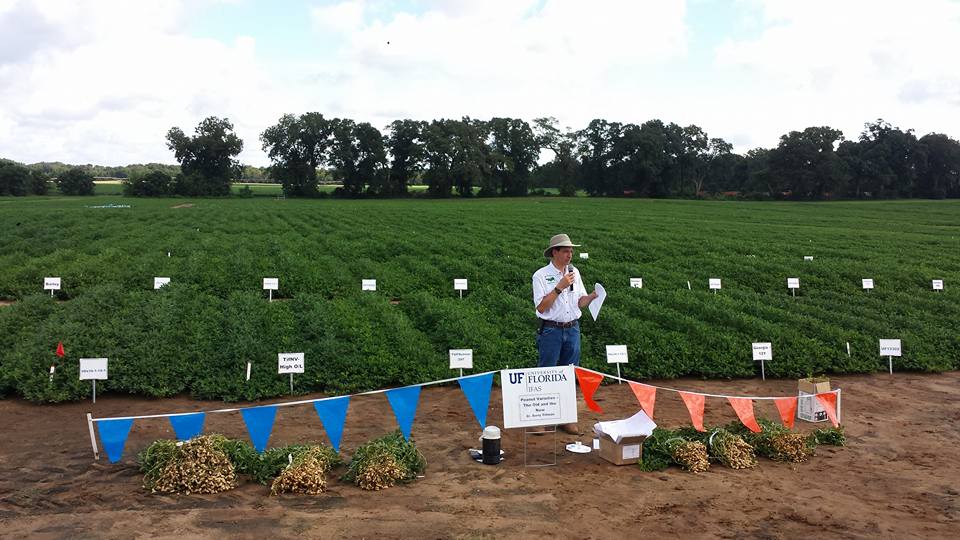
Dr. Barry Tillman shared information with peanut growers about variety testing results at the University of Florida’s annual Peanut Field Day. Credit: Doug Mayo, UF/IFAS
–
Dr. Barry Tillman, UF/IFAS Peanut Breeder, North Florida Research and Education Center, Marianna
In this technological age, we’ve all grown accustomed to the ability to simply plug in a new device and see it work. Mostly gone are the old days, when we had to install new software every time a new device was plugged into the computer. Today, “Plug and Play” technology makes the whole process appear seamless with electronic technology. But that’s not the case with biological technology. New biological technology will never be “Plug and Play” precisely because biological organisms have different characteristics and they have ability to respond, or not, to the environment where they find themselves. Likely, you are all aware that there are at least five effective vaccines against COVID-19, yet each is different and each person may respond differently to receiving a vaccine. This is biological uncertainty on display. It is true that the vaccines are highly effective, but they are not 100% effective, and the reaction of each individual person to the vaccine can be as varied as the people themselves.
This principle is true for peanut varieties as well. Each variety is different, in at least one characteristic, from any other variety. Because of these differences, each variety we grow will need a tweak to how it is grown relative to another variety. We should not expect to grow any two varieties in the exact same manner and maximize the potential of both. Instead, we should carefully examine the strengths and weaknesses of each variety and mange each variety to minimize potential losses caused by known weaknesses. Managing them in this way will allow their strengths to emerge and maximize their yield and grade potential. For a more detailed analysis, visit the Florida Peanut Team Website and locate the three-part presentation entitled “Closing the gap between yield potential and achieved yield- A focus on peanut variety,” or watch each of the three videos below.
Let’s use disease reaction as an example. A variety with outstanding resistance to tomato spotted wilt would be a better candidate for planting early (Mid-April- early May) than one without such resistance. Similarly, a variety with susceptibility to leaf spot should not be planted in late May or early June, because the risk of leaf spot increases in this planting window. There are many such interactions around disease control and the role that varieties can play. Fortunately, there is an effective tool to help make sense of these interactions, the Peanut Rx Analysis Tool can help you to visualize all the interactions among management factors that impact disease risk and how peanut varieties can be best chosen based on their disease reaction.
–
Part I – Peanut Yield Gap
–
Part II – Peanut Yield Gap Factors
–
Part III – Peanut Yield Gap Variety Management
- FloRun™ ‘725’ – A New High Yielding, Disease Resistant Peanut Variety - April 4, 2025
- Don’t Lean Too Hard on Your Peanut Variety for Disease Resistance - June 28, 2024
- ‘Arnie’ – A New Peanut Variety Released by the University of Florida - February 2, 2024
